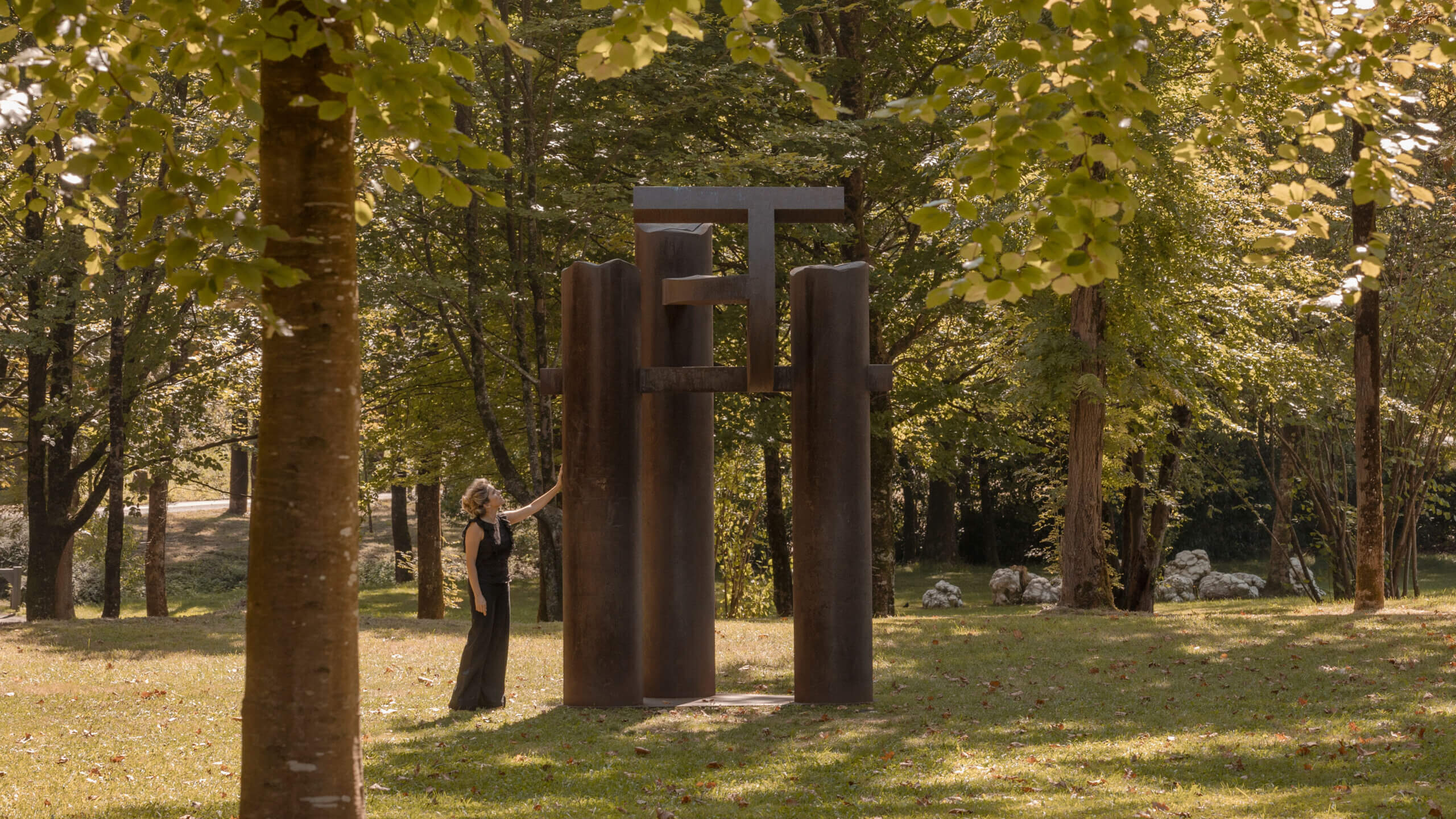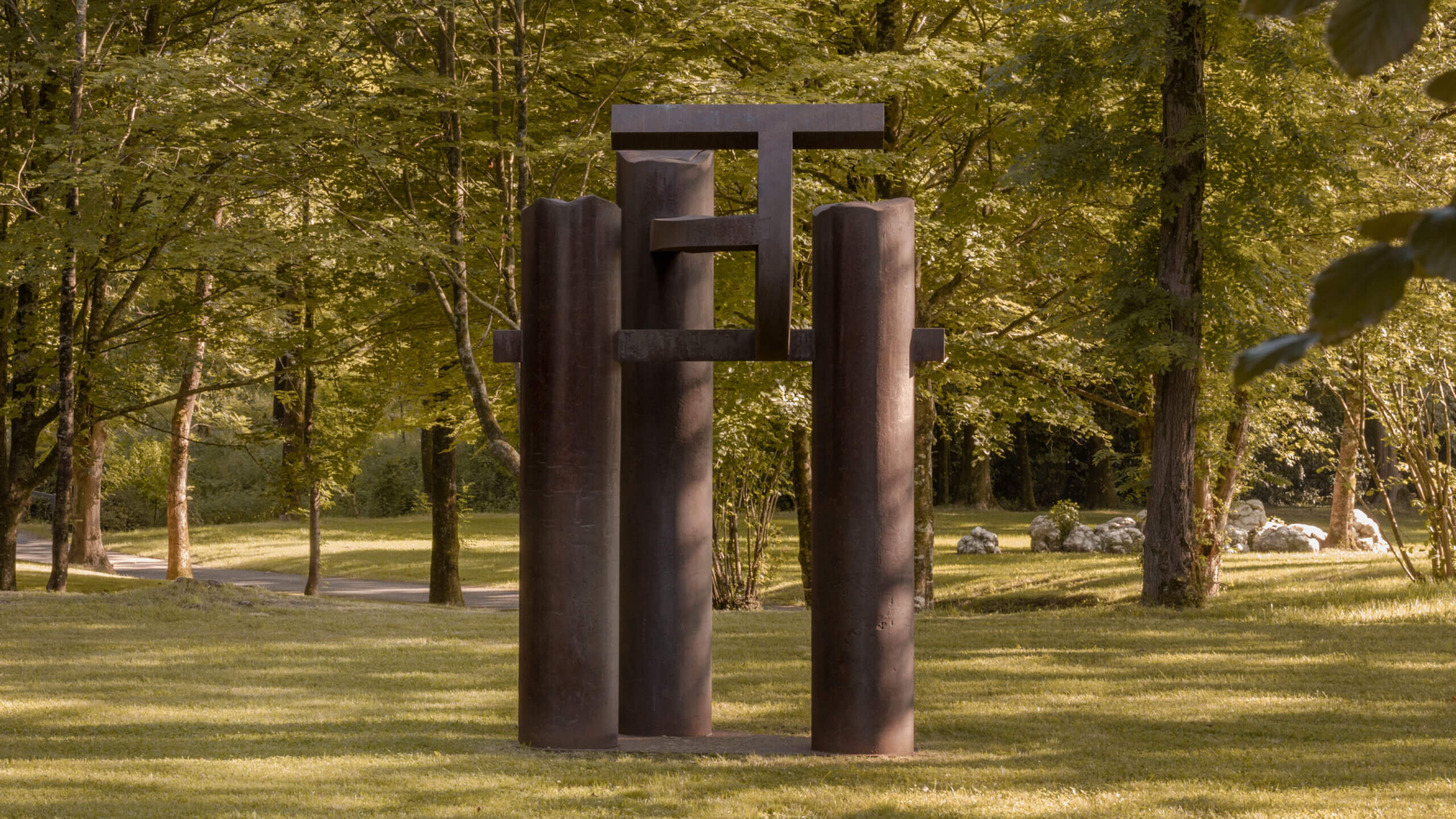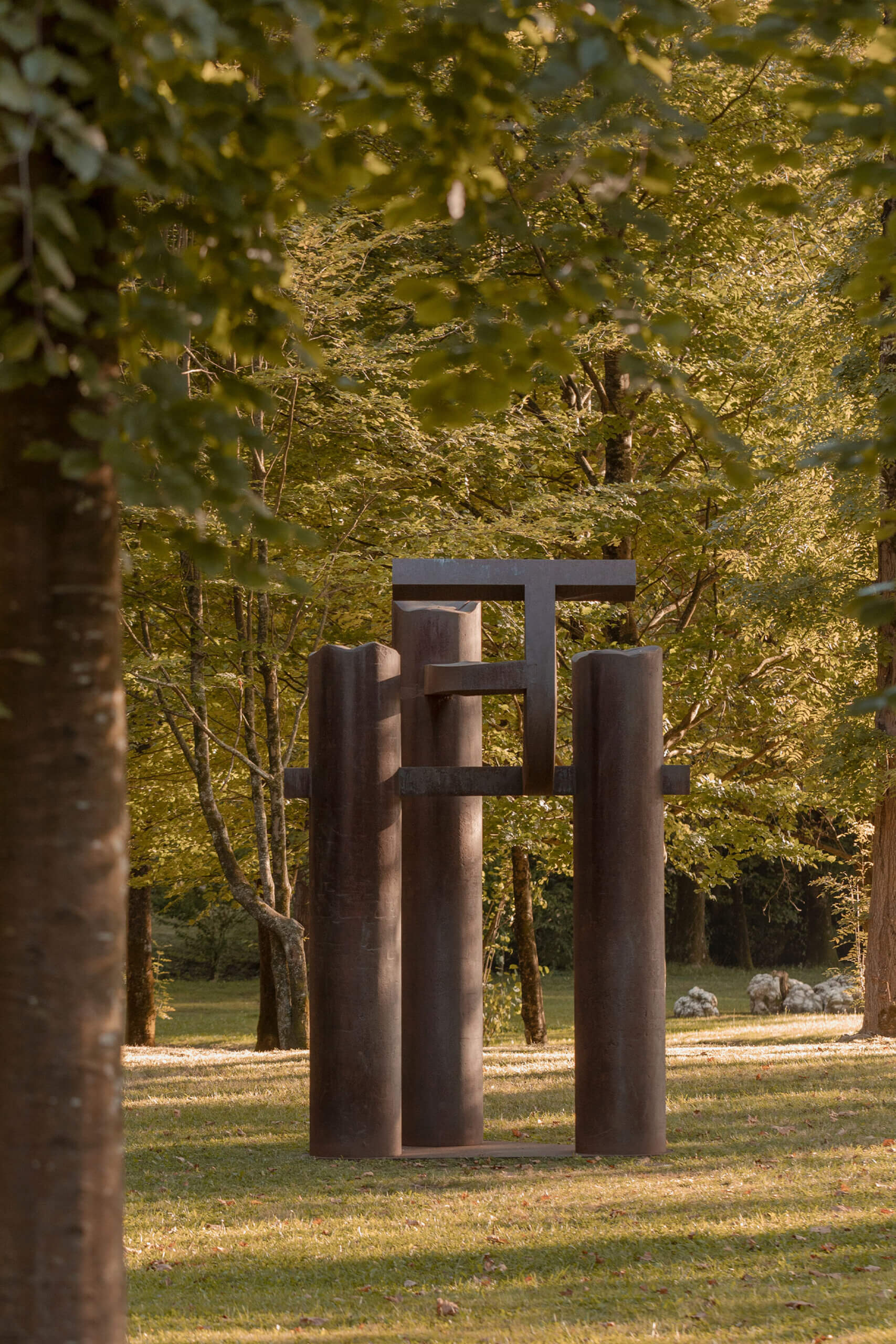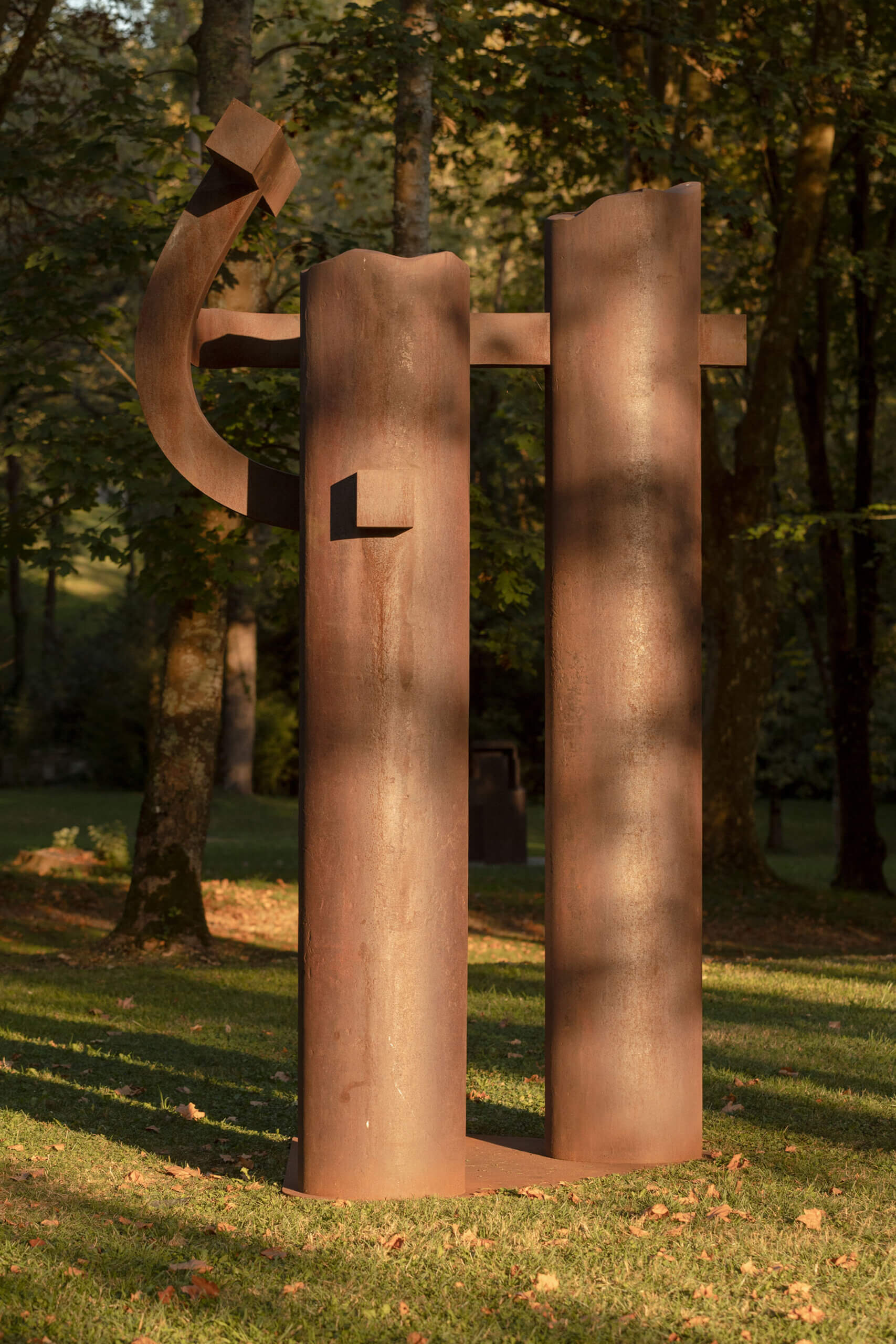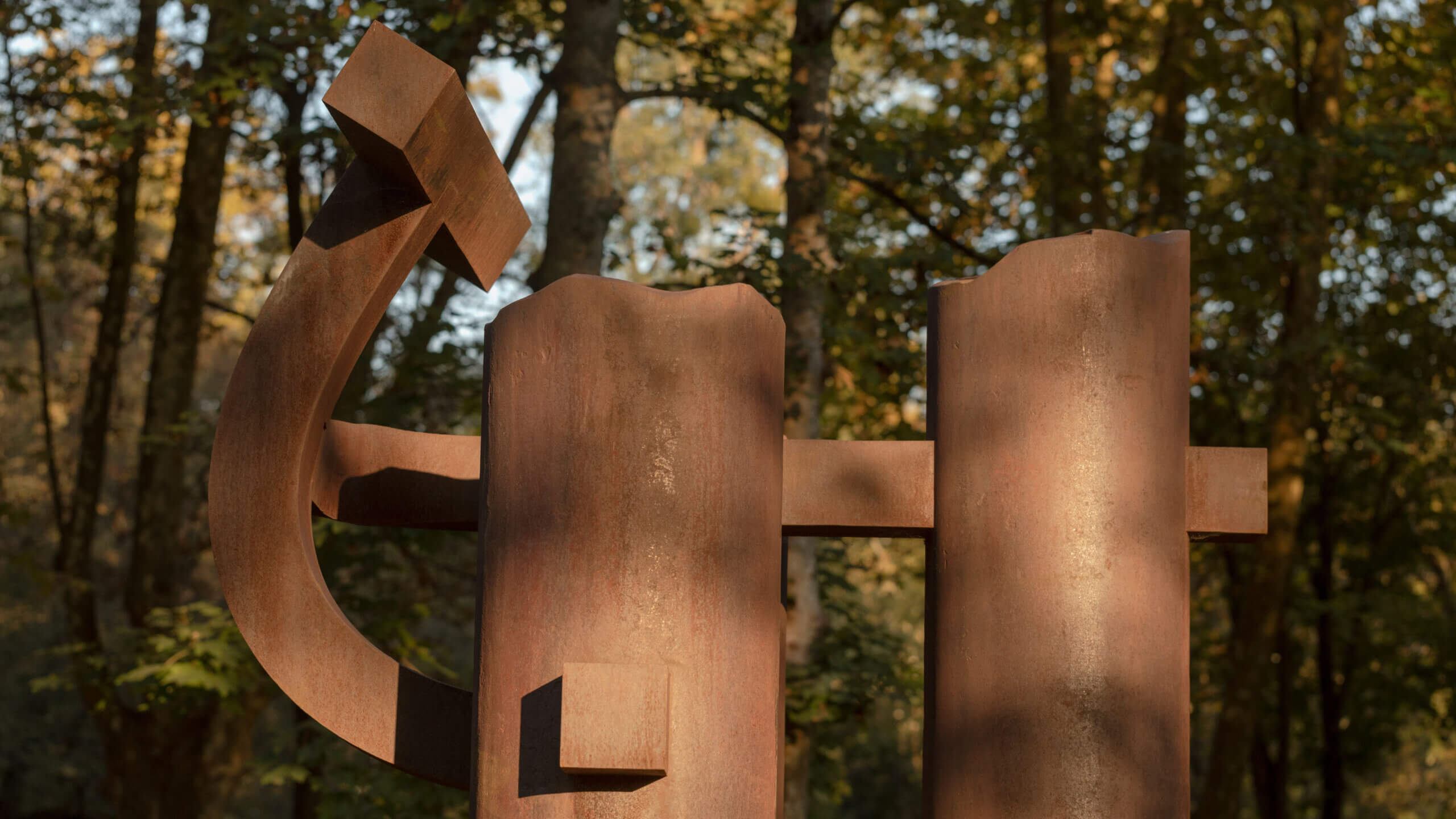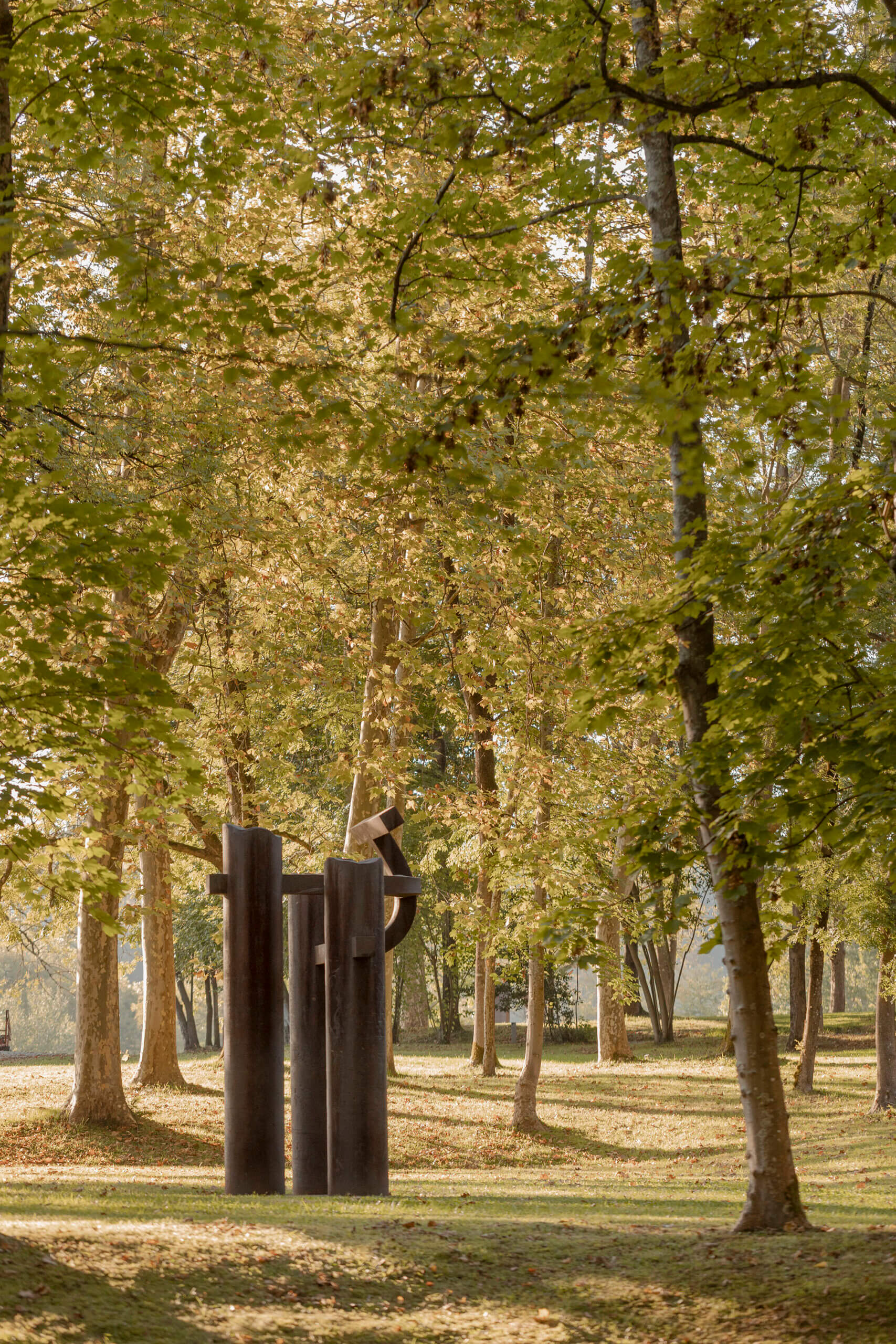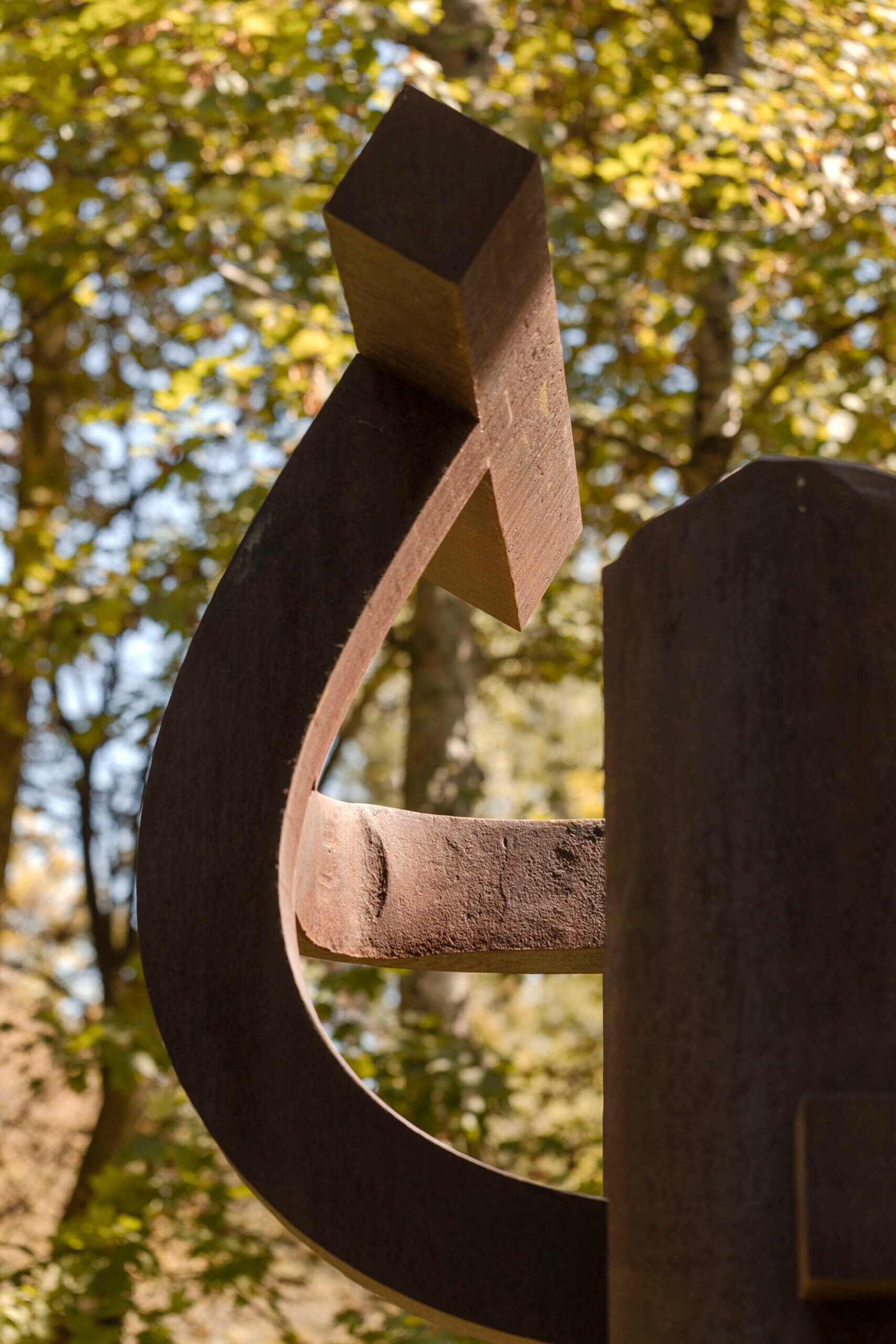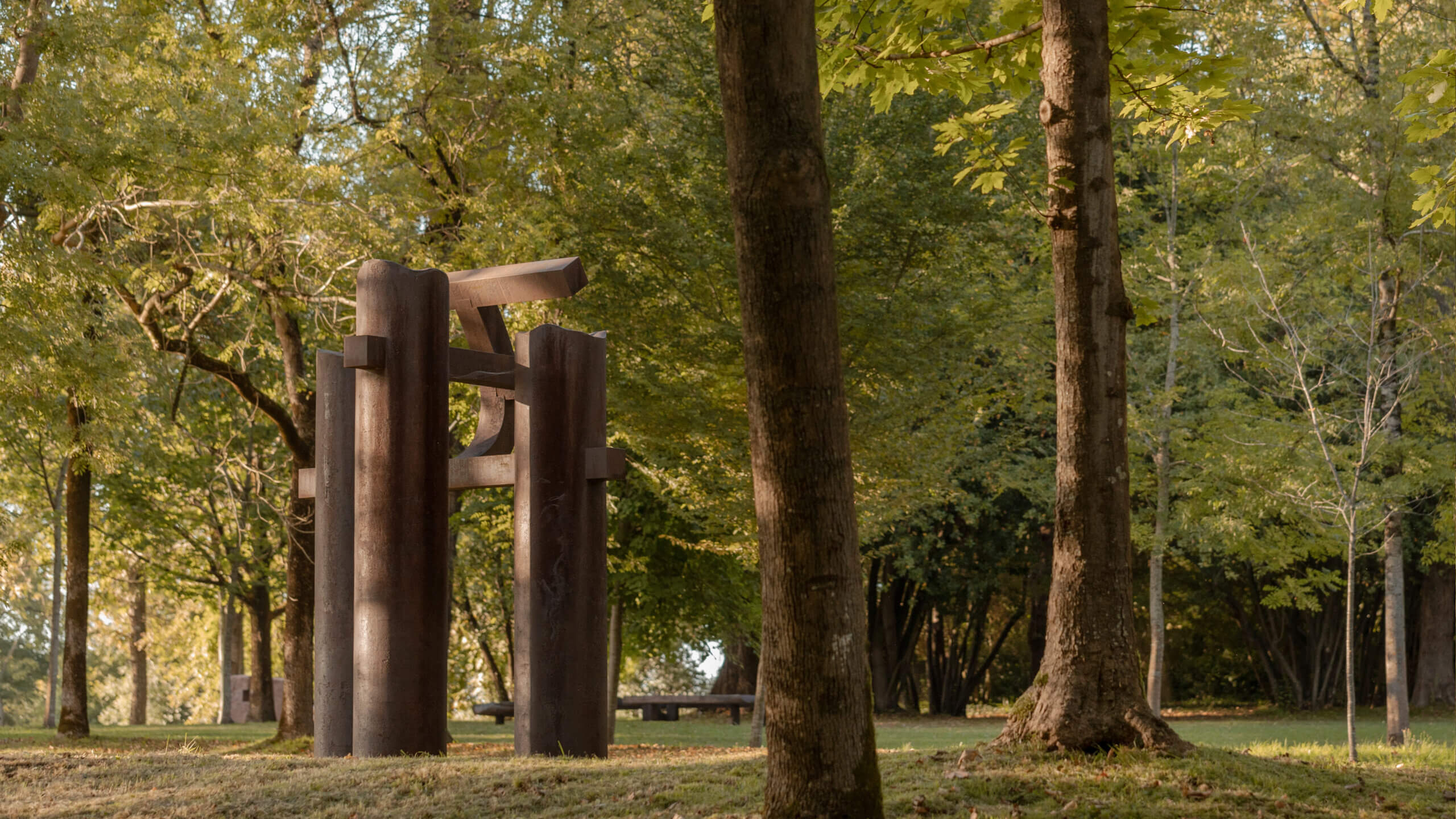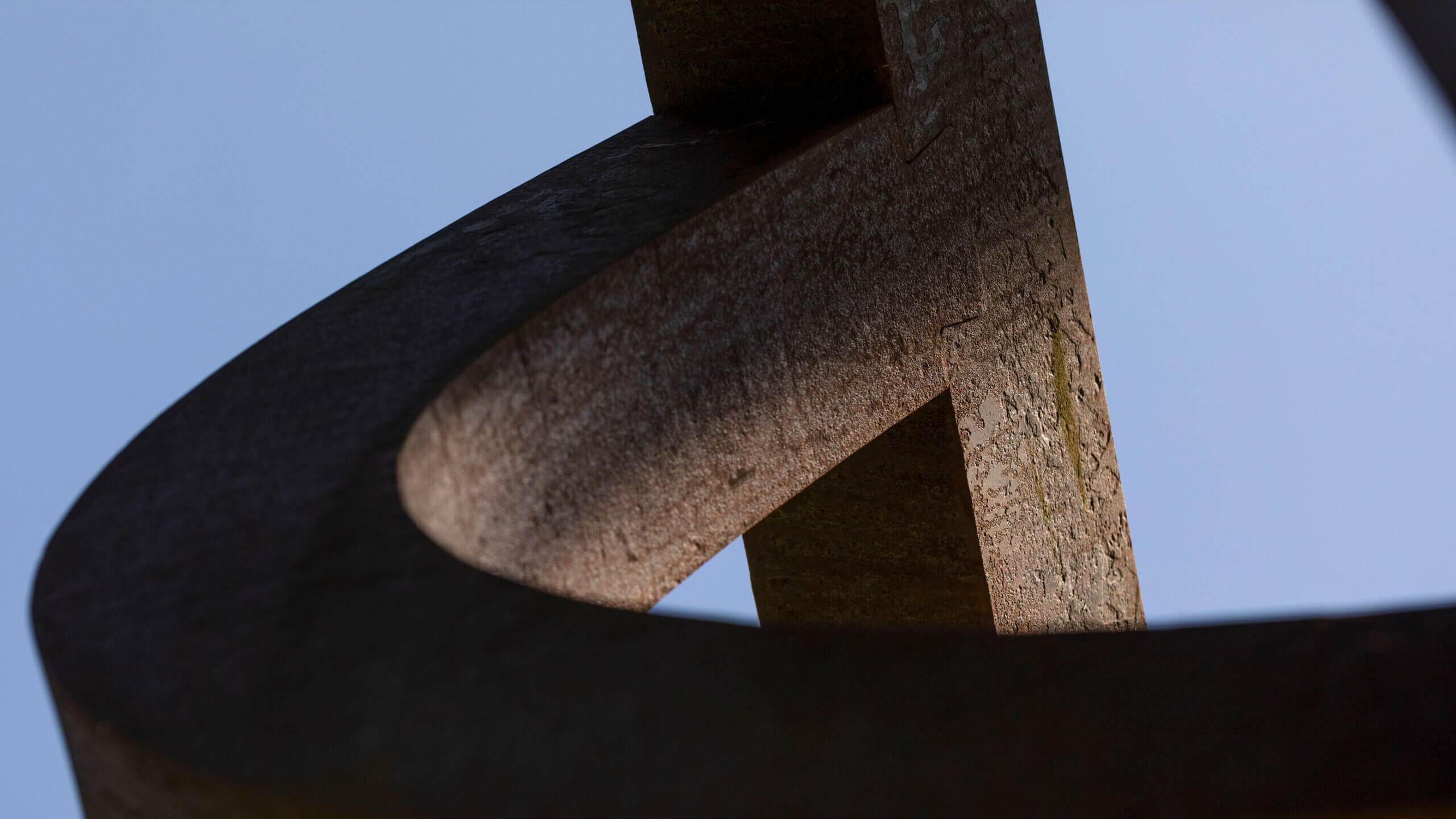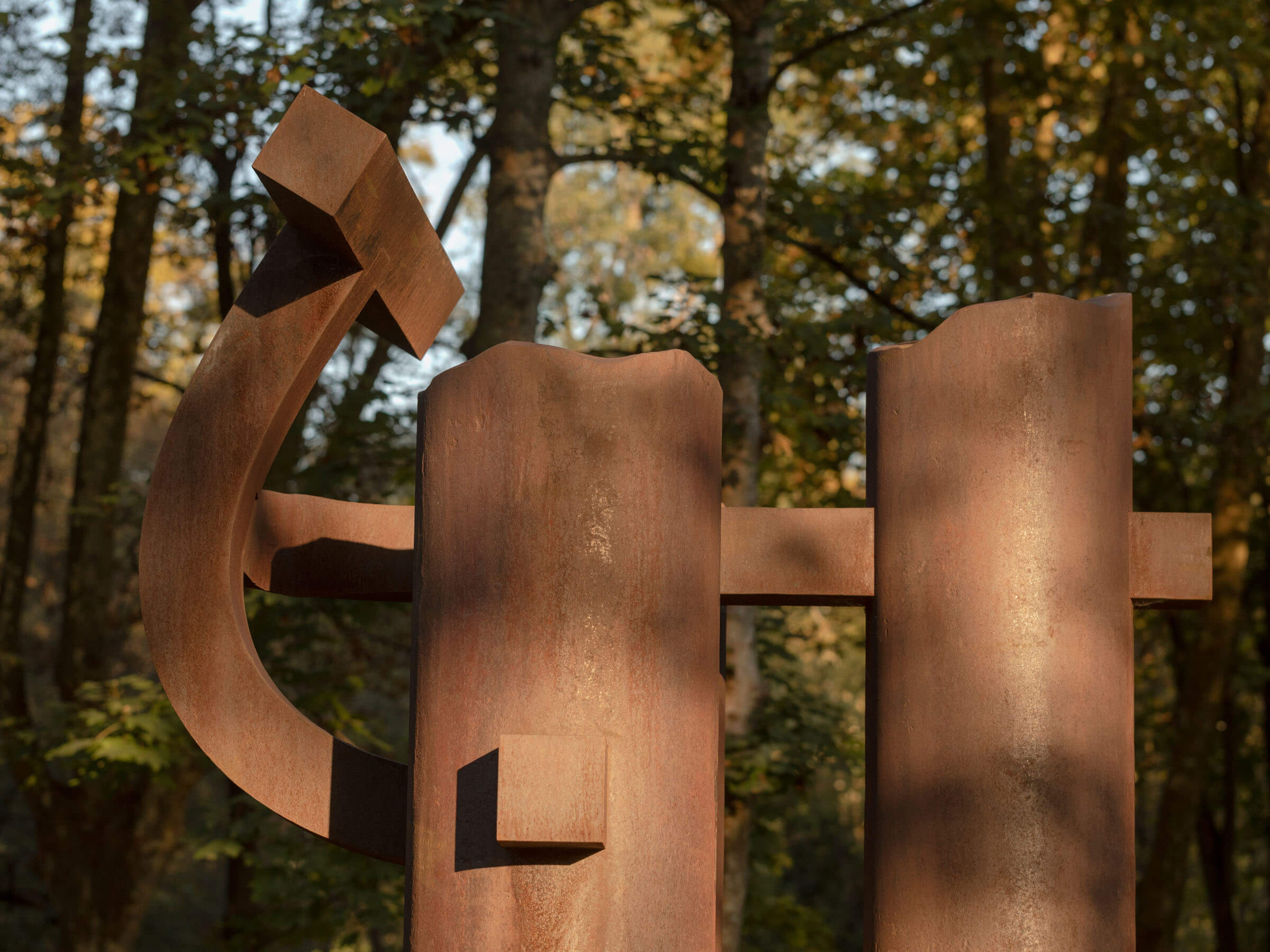
Eduardo Chillida
Basoa V (Forest V)
Basoa V (Forest V)
1997 Corten steel 367 x 245 x 209 cm / 144 ½ x 96 ½ x 82 ¼ in
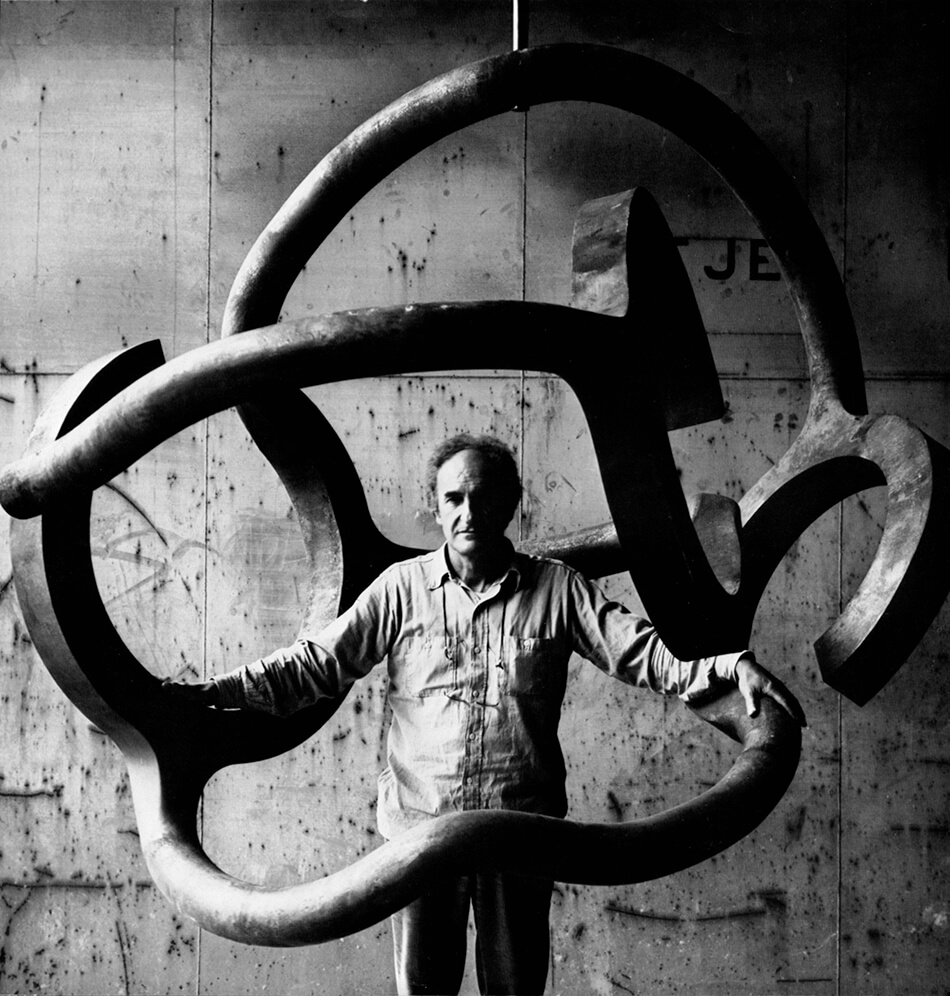
One of the most influential artists of the 20th Century, Eduardo Chillida produced a multifaceted oeuvre that includes small-scale sculpture, plaster work, drawing, engraving and most notably, monumental public sculptures. Throughout his career, Chillida drew on his Spanish heritage—especially that of the Basque region—as well as his fascination for organic form, influences from mystic European and Eastern philosophies, poetry and history. A master of many materials and techniques, Chillida created a diverse body and profoundly moving body of work, of which ‘Basoa V’ (‘Forest V’) is an outstanding example.

Created in 1997, the towering ‘Basoa V’ (‘Forest V’) is an ambitious monument; it is a forcible example of Eduardo Chillida’s late oeuvre and a testament of the enduring force of his large-scale outdoor public sculptures. Here, three tree-like columns, planted solidly on the earth, are bonded to one another through a graceful intertwining of matter and spirit. Soaring twelve feet into the sky, the work is a homage to the natural landscape and the earth, conceived to penetrate its natural surroundings and engage in rhythmic dialogue with the trees.
Ignacio Chillida on ‘Basoa V’
Son of the artist, Ignacio Chillida describes his father’s pioneering approach to creating sculpture that is rooted in nature. ‘He wasn't concerned with beauty in the slightest. It was order, structure. The exact same thing that nature does, everything is structured by its laws.’
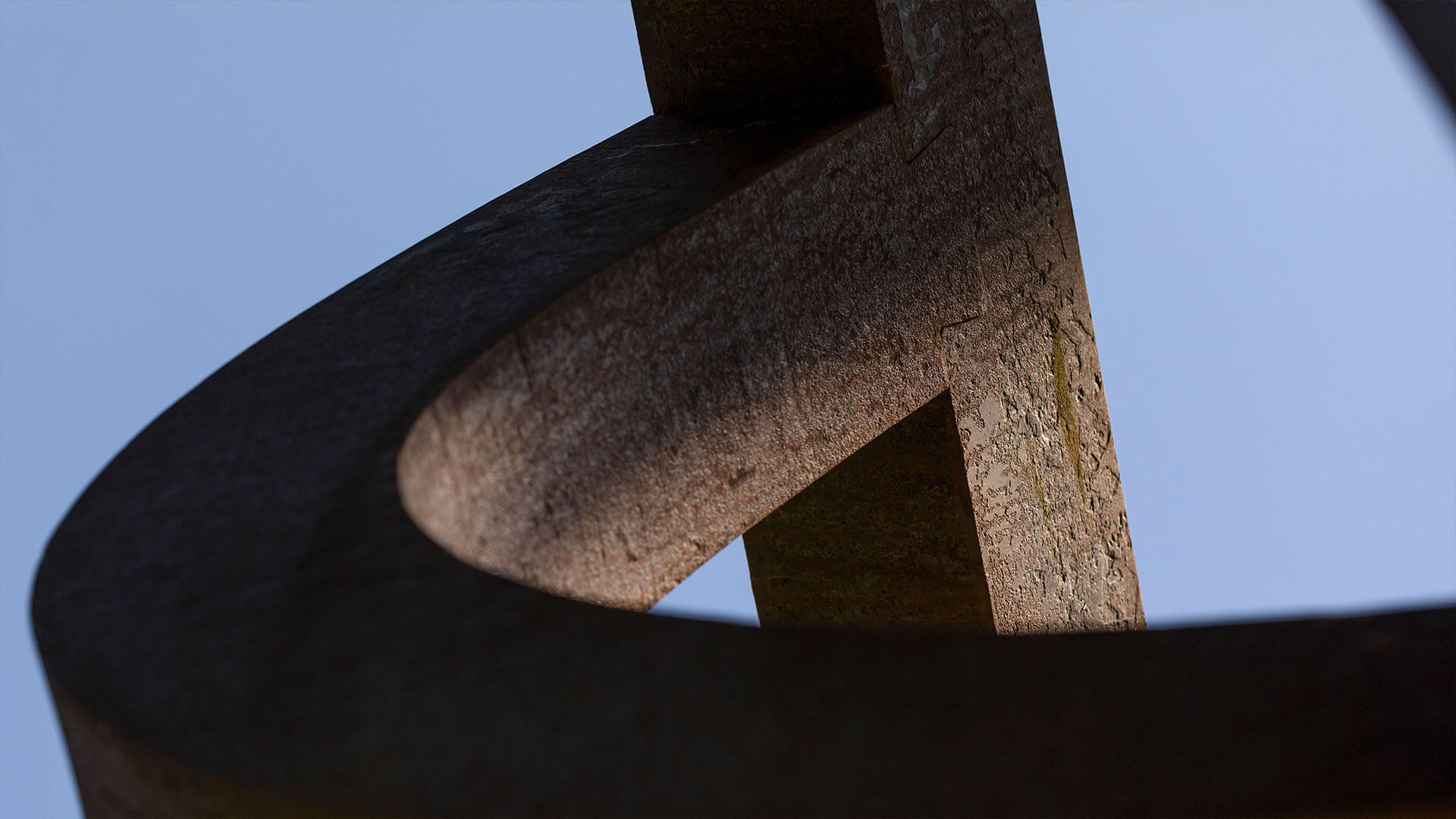
The final work from a series of five sculptures begun in the 1980s, the forged ironclad ‘Basoa V’ (‘Forest V’) reflects on Chillida’s sculptural idiom, which explores concepts such as the limit and the void. With its heavy solid base that is directly opposed by the lyrical openness of its organic curvilinear forms, the sculpture imbues in itself an abstract poetry that arises out of the refined and elegant manifestation in which three fundamental elements—space, mass, and material—fuse together in a single union.
‘In the Basque Country I feel at home, like a tree adapted to its territory but with arms open to the world.’—Eduardo Chillida

Chillida's choice of material —oxidized iron and burnished steel—is the artist’s trademark. For Chillida, the material’s characteristics—its hardness and inflexibility—mirror the Basque region’s history of industry, architecture, agriculture, while also recalling its distinctive landscape and quality of light, which he referred to as ‘black light.’ This term, inspired by the darker light given off by the Bay of Biscay, was given by the artist after contemplating the embodiment of the bright white light of the Mediterranean and its classical marble structures.
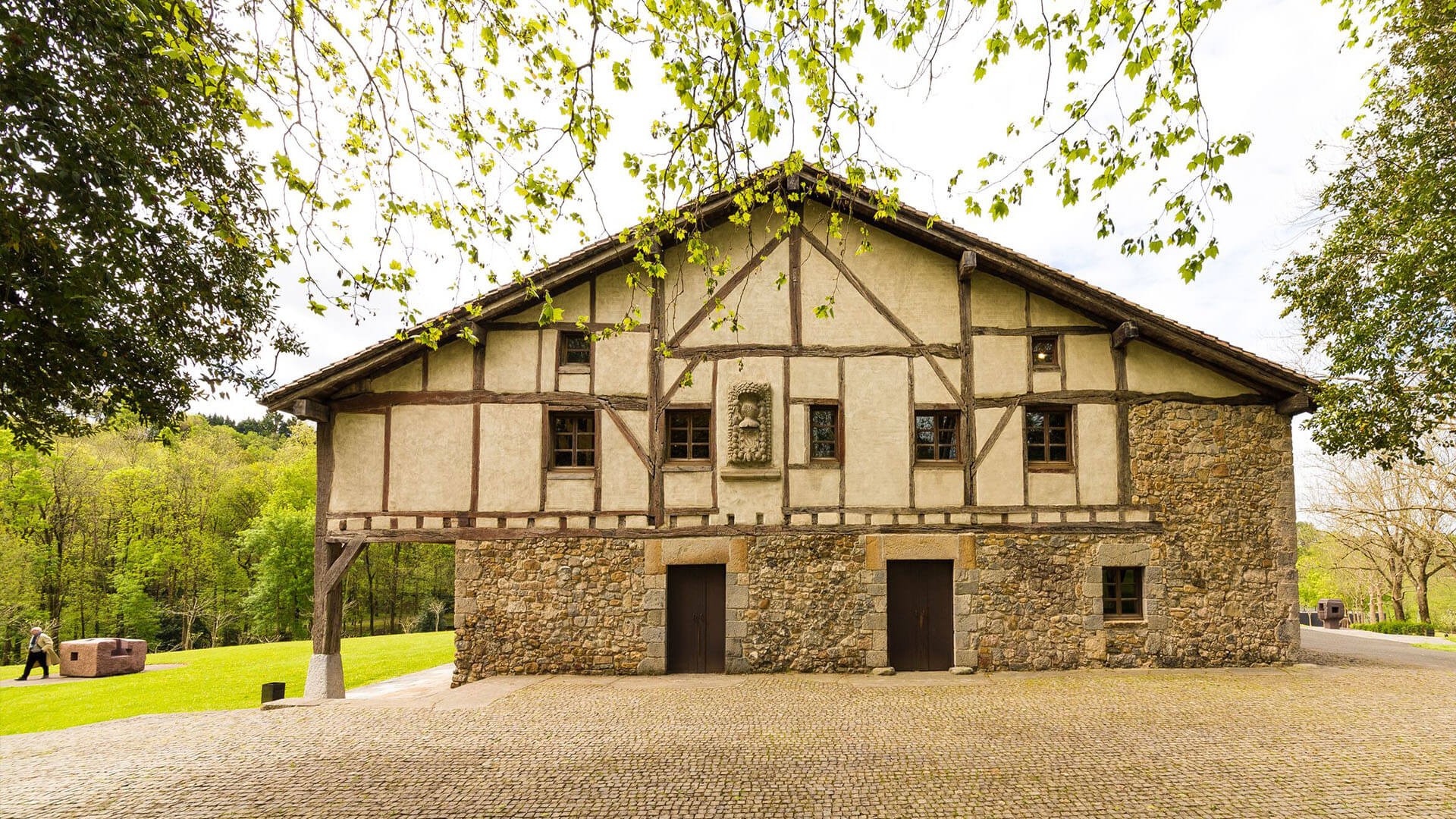
On view at Chillida Leku
A unique museum created by Eduardo Chillida during his lifetime, Chillida Leku is located in the heart of the Basque Country. ‘Basoa V’ (‘Forest V’) is on view alongside other important works by the artist in dialogue with their surroundings: with the trees, with the landscape, and with the Zabalaga country house.
Images: Eduardo Chillida, Basoa V (Forest V), 1997. Photo: Alex Abril; Eduardo Chillida with ‘Homenaje a Calder’ (‘Homage to Calder’) (1979) at the Larrañaga workshop in Lezo; Eduardo Chillida with ‘Basoa V’, Chillida Leku, 1999; View of the Zabalaga country house at Chillida Leku, Hernani, Spain. Courtesy the Estate of Eduardo Chillida and Hauser & Wirth © Zabalaga-Leku. ARS, New York / VEGAP, Madrid, 2020.
